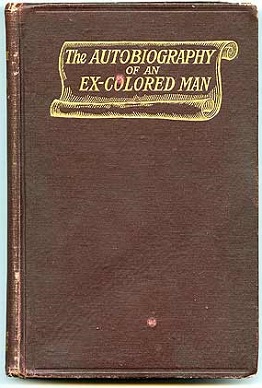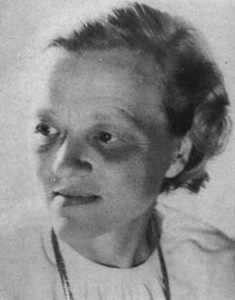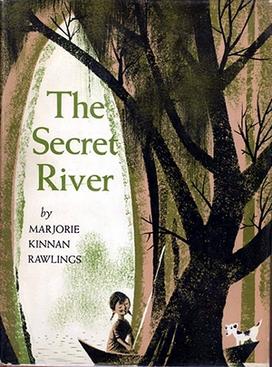
Numa Pompilius was the legendary second king of Rome, succeeding Romulus after a one-year interregnum. He was of Sabine origin, and many of Rome's most important religious and political institutions are attributed to him, such as the Roman calendar, Vestal Virgins, the cult of Mars, the cult of Jupiter, the cult of Romulus, and the office of pontifex maximus.

Tullus Hostilius was the legendary third king of Rome. He succeeded Numa Pompilius and was succeeded by Ancus Marcius. Unlike his predecessor, Tullus was known as a warlike king who according to the Roman Historian Livy, believed the more peaceful nature of his predecessor had weakened Rome. It has been attested that he sought out war and was even more warlike than the first king of Rome, Romulus. Accounts of the death of Tullus Hostillus vary. In the mythological version of events Livy describes, he had angered Jupiter who then killed him with a bolt of lightning. Non mythological sources on the other hand describe that he died of plague after a rule of 32 years.

Colored is a racial descriptor historically used in the United States during the Jim Crow Era to refer to an African American. In many places, it may be considered a slur, though it has taken on a special meaning in Southern Africa referring to a person of mixed Black and White heritage.
The one-drop rule was a legal principle of racial classification that was prominent in the 20th-century United States. It asserted that any person with even one ancestor of black ancestry is considered black. It is an example of hypodescent, the automatic assignment of children of a mixed union between different socioeconomic or ethnic groups to the group with the lower status, regardless of proportion of ancestry in different groups.

The Autobiography of an Ex-Colored Man (1912/1927) by James Weldon Johnson is the fictional account of a young biracial man, referred to only as the "Ex-Colored Man", living in post-Reconstruction era America in the late nineteenth and early twentieth centuries. He lives through a variety of experiences, including witnessing a lynching, that convince him to "pass" as white to secure his safety and advancement, but he feels as if he has given up his dream of "glorifying" the black race by composing ragtime music.

The gens Marcia, occasionally written Martia, was one of the oldest and noblest houses at ancient Rome. They claimed descent from the second and fourth Roman Kings, and the first of the Marcii appearing in the history of the Republic would seem to have been patrician; but all of the families of the Marcii known in the later Republic were plebeian. The first to obtain the consulship was Gaius Marcius Rutilus in 357 BC, only a few years after the passage of the lex Licinia Sextia opened this office to the plebeians.

Marguerite de Angeli was an American writer and illustrator of children's books including the 1950 Newbery Award winning book The Door in the Wall. She wrote and illustrated twenty-eight of her own books, and illustrated more than three dozen books and numerous magazine stories and articles for other authors.
Barbara Cooney was an American writer and illustrator of 110 children's books, published over sixty years. She received two Caldecott Medals for her work on Chanticleer and the Fox (1958) and Ox-Cart Man (1979), and a National Book Award for Miss Rumphius (1982). Her books have been translated into 10 languages.

The Snowy Day is a 1962 American children's picture book by American author and illustrator Ezra Jack Keats. It features Peter, an African American boy, who explores his neighborhood after the season's first snowfall. Keats’ illustrations helped pave the way for more inclusive and diverse children's literature. Keats received the 1963 Caldecott Medal for his collage artwork, which made The Snowy Day the first picture book with an African American protagonist to win a major children's award. The book's reception was largely positive, although some critics pointed out subtle stereotypes, such as how Peter's mother was portrayed. Since its publication The Snowy Day has sold millions of copies and has been translated, adapted, and honored leaving a lasting impression on generations of readers.

Marie Hall Ets was an American writer and illustrator who is best known for children's picture books. She attended Lawrence College, and in 1918, Ets journeyed to Chicago where she became a social worker at the Chicago Commons, a settlement house on the northwest side of the city. There she met Ines Cassettari, an immigrant from Italy who worked at the settlement. Ets transcribed Cassettari's autobiography, and the book was later published as Rosa: The Life of an Italian Immigrant.

John Casor, a servant in Northampton County in the Virginia Colony, in 1655 became the first person of African descent and second person in the Thirteen Colonies to be declared as a slave for life as a result of a civil suit. In 1662, the Virginia Colony passed a law incorporating the principle of partus sequitur ventrem, ruling that children of enslaved mothers would be born into slavery, regardless of their father's race or status. This was in contradiction to English common law for English subjects, which based a child's status on that of the father. In 1699 the Virginia House of Burgesses passed a law deporting all free black people. But many new families of free black people continued to be formed during the colonial years by the close relationships among the working class.

Edmund Evans was an English wood-engraver and colour printer during the Victorian era. He specialized in full-colour printing, a technique which, in part because of his work, became popular in the mid-19th century. He employed and collaborated with illustrators such as Walter Crane, Randolph Caldecott, Kate Greenaway and Richard Doyle to produce what are now considered to be classic children's books. Little is known about his life, although he wrote a short autobiography before his death in 1905 in which he described his life as a printer in Victorian London.
The gens Gegania was an old patrician family at ancient Rome, which was prominent from the earliest period of the Republic to the middle of the fourth century BC. The first of this gens to obtain the consulship was Titus Geganius Macerinus in 492 BC. The gens fell into obscurity even before the Samnite Wars, and is not mentioned again by Roman historians until the final century of the Republic.
The leges regiae were early Roman laws, which classical historians, such as Plutarch, mentioned had been introduced by the Kings of Rome.

The gens Pomponia was a plebeian family at ancient Rome. Its members appear throughout the history of the Roman Republic, and into imperial times. The first of the gens to achieve prominence was Marcus Pomponius, tribune of the plebs in 449 BC; the first who obtained the consulship was Manius Pomponius Matho in 233 BC.

The Secret River is a children's fantasy novel by Marjorie Kinnan Rawlings, author of The Yearling. Published in 1955, The Secret River received a Newbery Honor Award. The first edition, illustrated by Caldecott Medal winner Leonard Weisgard, was issued after Rawlings' death. The book was revised and reissued in 2009 with illustrations by Caldecott Medalists Leo and Diane Dillon. The new edition received an international children's book design award in 2012. The Secret River is the only book Rawlings wrote specifically for children. The story of young Calpurnia, who goes on a quest to find a magical river and catch fish for her starving family and friends, it has two themes common in Rawlings' writing, the magic of childhood and the struggle of people to survive in a harsh environment.

Peter or Gordon, or "Whipped Peter", or "Poor Peter" was a self-emancipated, formerly enslaved man who was the subject of photographs documenting the extensive scarring of his back from whippings received in slavery. The "scourged back" photo became one of the most widely circulated photos of the abolitionist movement during the American Civil War and remains one of the most notable photos of the 19th-century United States.
Eurybus of Athens was an ancient Greek athlete listed by Eusebius of Caesarea as a victor in the stadion race of the 27th Olympiad. His name is also referred as Eurybates or Eurybotos and possibly Eurybotas elsewhere in Pausanias, both of the latter two have been anglicised to "Eurybotus" by editors, although elsewhere the distinction is preserved. He was the second winner from Athens preceded only by Pantacles.

Julia Ringwood Coston was a 19th-century Afro-American publisher and magazine editor. In 1891, she founded Ringwood's Afro-American Journal of Fashion, the first illustrated paper for black women.

Alma and How She Got Her Name is a 2018 children's picture book by Juana Martinez-Neal. Alma, whose full name is Alma Sofia Esperanza José Pura Candela, thinks she has too many names and so she asks her dad about them. He explains the various people she was named to honor. The book was spurred by Martinez-Neal's Peruvian immigrant experience and the birth of her children. The book was well reviewed and a recipient of a 2019 Caldecott Honor for its illustrations. The graphite and colored pencil illustrations feature only a few colors, including blue and pink. Martinez-Neal hoped to evoke the feel of a photo album, in keeping with the book's theme of family.















